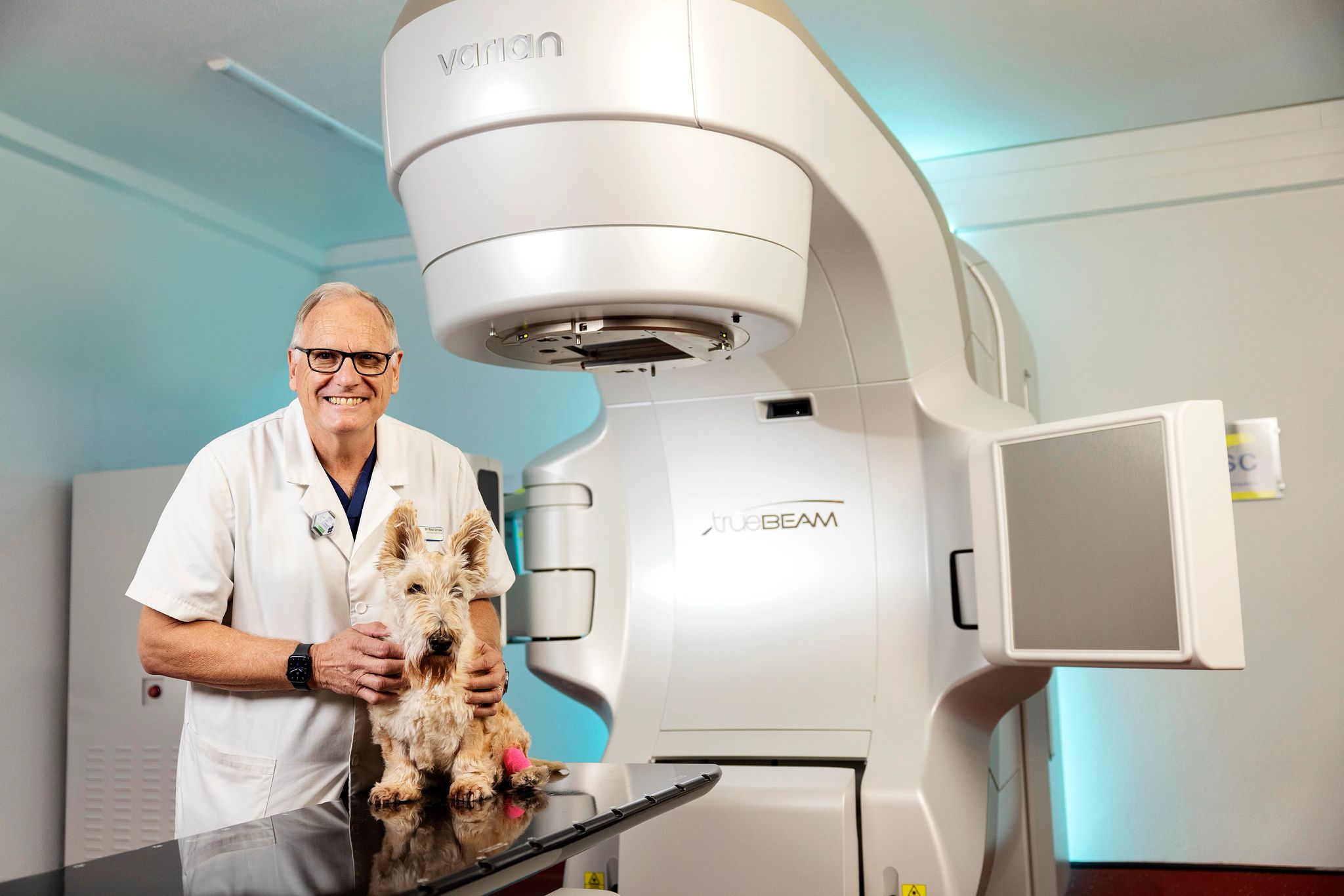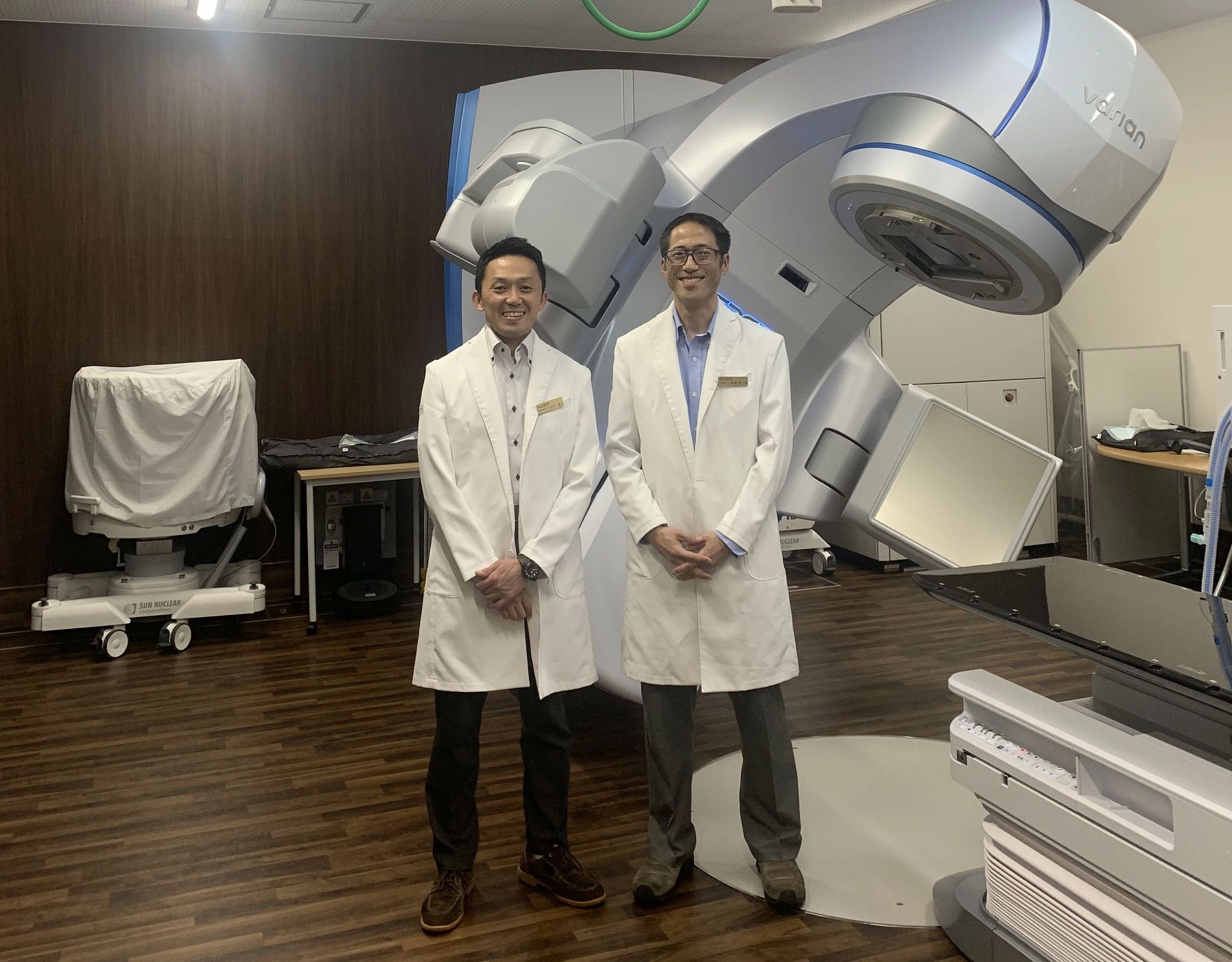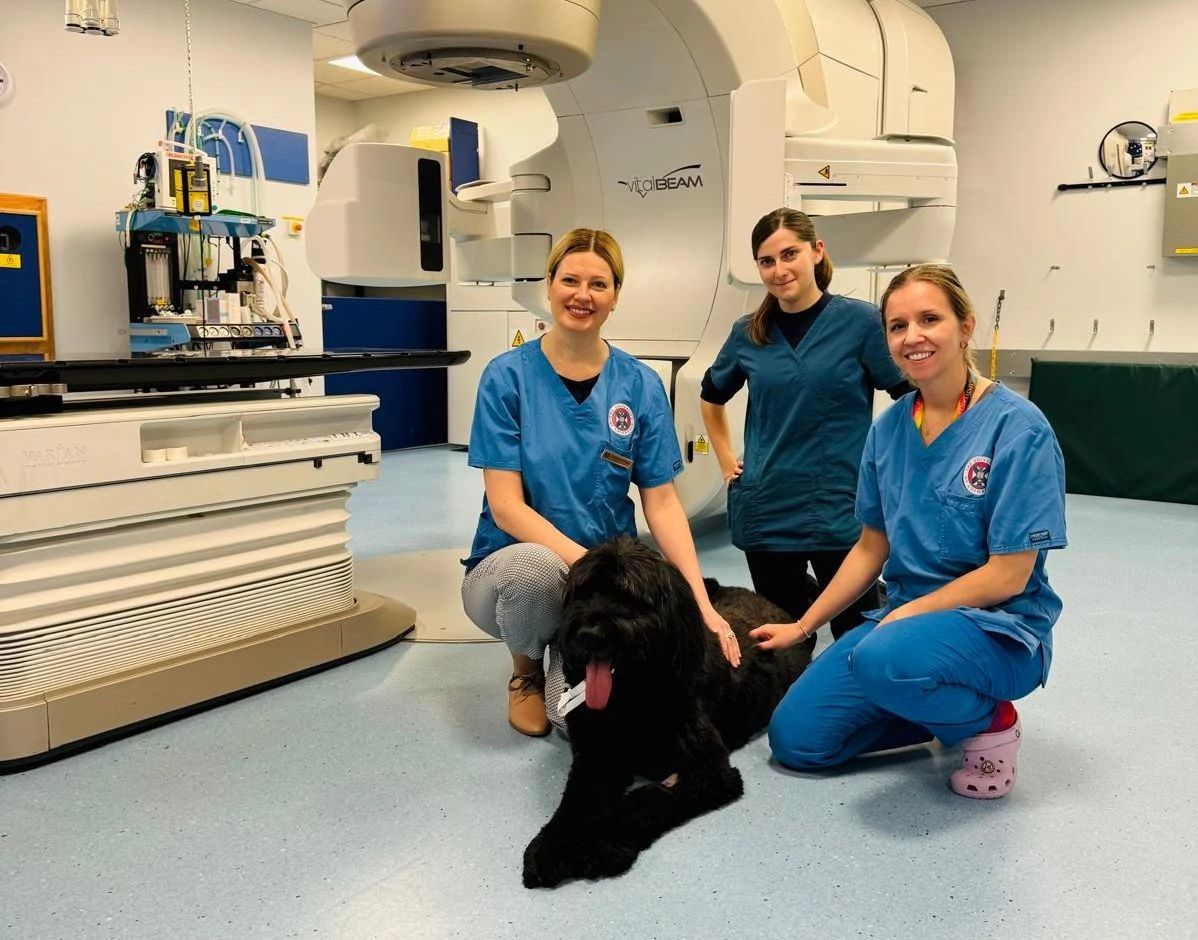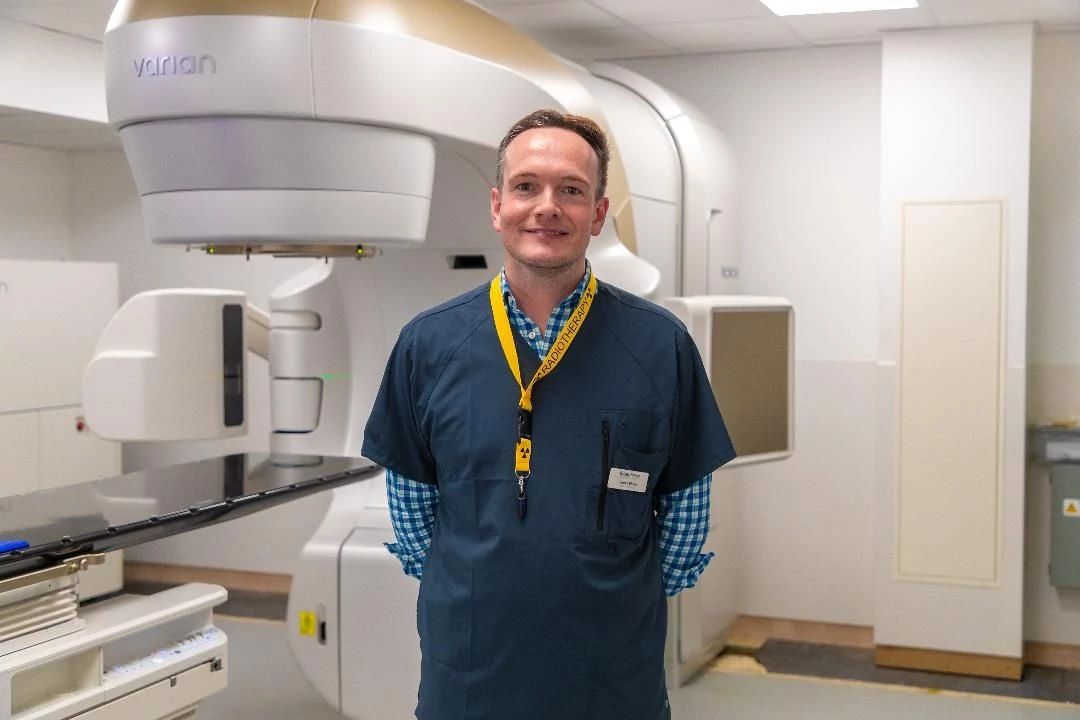Pet ownership in many parts of the world is soaring, as income levels and demographics shift, with more than half the world population estimated to have a pet at home.1 This change in the status of pets as valued family members has resulted in an increase in healthier, well-cared for animals and a growing dependency on advanced veterinary care, including cancer treatment and even radiotherapy.
Top image: Dr. Eric Tiong and Dr. Harry Cheng, founders of the Hong Kong-based Harvest Veterinary Oncology Centre.
To examine the status of radiotherapy in veterinary care today, we reached out to six top-class veterinary hospitals around the world, all delivering radiotherapy for cancer to common pets, including cats, dogs, rabbits, and rodents, and in some cases more exotic animals, such as lizards, birds, tortoises, snakes, and even a koala bear.
Among other things, we learned that, for these six veterinary hospitals, the most common types of cancer treated with radiotherapy include brain, sinonasal, local (non-metastatic) tumors, spine, head & neck, thyroid, anal sac, urogenital, liver, adrenal, lung, and several skin cancer types. As is often the case when treating people, radiotherapy combined with surgery, chemotherapy, and/or immunotherapy is used, particularly for treating diseases such as soft tissue sarcomas, bone cancer, oral cancer, and lymphoma.
Fewer Side Effects and Improved Outcomes
Of the six veterinary hospitals, the Brisbane Veterinary Specialist Centre (BVSC) in Australia has the longest experience offering radiotherapy. Their first medical linear accelerator (LINAC) was commissioned in 2007; today they utilize a Varian TrueBeam system. To date, more than 1,500 animal patients have received radiotherapy treatment at BVSC.

“Since our TrueBeam went live, the majority of cases we treat receive volumetric modular arc therapy (VMAT) and most of these are stereotactic or stereotactic body radiotherapy (SRT or SBRT) consisting of mostly three consecutive daily treatments,” explained Dr. Rod Straw, small animal oncology specialist at BVSC. “Veterinary radiation therapy has been a great benefit to our oncology patients for many years but the advent of intensity-modulated radiotherapy (IMRT), integrated on-board imaging, advanced imaging techniques, and all the new protocols now available due to technological advancement means that we can treat with fewer side effects and likely better overall outcomes. Plus, it’s increasing the number and types of patients we can treat. More patients to benefit with better quality of life,” he added.
At the Animal General Hospital Veterinary Specialists and Emergency Center in Kawaguchi City, Japan, Dr. Hiroto Yoshikawa and members of his radiation oncology team have treated about 140 cases using a Varian Edge system since its commissioning in summer 2023. Most of their patients are middle-aged to older cats and dogs, often in need of palliative care. In Japan, many pet owners are reluctant to consider humane euthanasia and it’s rarely discussed with primary-care veterinarians, according to Dr. Yoshikawa.
Non-Invasive Targeted Treatments
Dr. Yoshikawa and his team use a variety of radiotherapy treatment techniques, including parallel-opposed fields with hand calculations, electron beam treatment, VMAT, and SRT. For palliative care, they offer hypo-fractionated protocols with either 3D-conformal (3D CRT) or IMRT.

“Providing a radiotherapy option to pet owners has improved pets’ treatment outcomes in many types of neoplastic disease in dogs and cats,” Dr. Yoshikawa said. “Most of our clients have been positively impressed by how we treated their pets, and we strongly feel that radiotherapy continues to be one of the major treatment modalities. Its non-invasiveness means reduced recovery time compared to surgery. Also, its more targeted treatment compared to systemic chemotherapy means that pet owners’ and family veterinarians’ attention to veterinary radiotherapy continues to grow.”
Long-Term Tumor Control and Treatments for Benign Conditions
The Riddell-Swan Veterinary Center (RSVC) in Scotland at the University of Edinburgh’s Hospital for Small Animals is one of the largest veterinary oncology centers in Europe, providing cancer care for pets for more than a decade. Its radiotherapy team, headed by Dr. Magdalena Parys, performs parallel-opposed fields with manual calculation, electron beam treatments, 3D CRT, IMRT, and VMAT. Palliative, definitive and SRT protocols are used to treat cancer patients using a Varian VitalBeam system. As in other veterinary hospitals, many Riddell-Swan patients are middle- to older-aged animals, and the hospital offers palliative care for those with advanced cancer, to improve their clinical signs and quality of life.
“Definitive protocols can be used in some patients to achieve long-term control and potentially, to cure,” Dr. Parys explained. “We may also offer SRT in some cases, which results in long-term control being achieved in a shorter time frame in comparison to definitive protocols. We can also offer radiotherapy for some non-cancerous patients—for instance, in some cases we can irradiate arthritic joints to provide pain relief.”

Treatment planning for each patient is accomplished in one of two ways, depending on many factors. Patients undergo either a manual/hand calculation or a CT scan-based planning session, as follows:
- During a manual planning session, the patient is positioned on the LINAC couch under general anesthesia and the veterinary radiation oncologist marks out the area for treatment, working with the radiographer to decide upon the field size, collimator, and gantry angles, and manually calculating the number of monitor units for the required prescription. The patient then has a kV image to check positioning and is treated (first fraction under the same anesthetic).
- During CT scan-based planning sessions, the patient is anesthetized, and a personalized immobilization device is created. This might include a head shell, bite plate, mouth bite, vacuum bags, and moldable cushions. In a process that mirrors the workflow in radiation oncology for humans, the patient’s CT scan images are transferred into Varian’s Eclipse treatment planning system, and the team contours organs at risk and targets, delineating the gross, clinical, and planning target volumes (GTV, CTV, & PTV). From there, a treatment plan is created, a verification plan is run on the LINAC and once it has passed QA, the patient comes back to start treatment.
In both workflows, the patient is anesthetized again during each treatment.
Escalating Demand for Veterinary Radiotherapy
This protocol—consultation, simulation, planning, QA, treatment, and follow-up—is a standard workflow across all the veterinary hospitals profiled here, including the Hong Kong-based Harvest Veterinary Oncology Centre. Dr. Harry Cheng and his team brought the latest advanced radiotherapy care for animals to the region in 2022, with a Varian Halcyon system, plus the ARIA oncology information system, Eclipse, the Mobius platform for patient quality assurance, and the Velocity imaging data management solution.
“Our decision to introduce radiotherapy was bolstered by the escalating demand for advanced veterinary treatments in Hong Kong, and we’ve already seen a growth rate in cases of about 50 percent,” Dr. Cheng said. “By providing these radiotherapy services, Hong Kong's veterinary community actively contributes to the advancement of veterinary medicine. The experience gained from treating animal patients with radiotherapy can offer valuable insights and contribute to ongoing research and development in the field, leading to improved treatments and outcomes for future generations of animals.”

The University of Glasgow Small Animal Hospital in the UK also opened its radiotherapy treatment department 13 years ago, in response to a growing demand for radiotherapy treatment options for pets, and recently upgraded technology with a Varian VitalBeam system. Previously, the veterinary hospital treated 70-80 patients a year; however case numbers will likely increase with the installation of the new treatment machine. Cases are mainly dogs over eight years of age and are referred to radiotherapy from within the hospital, from outside veterinary oncology specialists, or from primary care veterinary surgeons.
“We previously offered definitive 3D-conformal radiotherapy delivered either daily or three times a week for four weeks as well as more palliative protocols,” explained Joanna Morris, Professor of Veterinary Oncology at the university-based hospital. “However, with the new VitalBeam, we can also offer IMRT or VMAT daily treatments and also, SRT. We have a holistic approach to deciding if radiotherapy will benefit the patient, in that we consider quality of life as well as potential extension of life, but unfortunately, it often comes down to the pet owners’ finances.”
At the Southfields Veterinary Specialists hospital in Basildon, Essex, UK, Dr. James Elliott also sees many cats and dogs referred for radiotherapy treatment. The hospital treats using a Varian TrueBeam system and offers both IMRT and SRT.

“Most pets with cancer are older, but age is not really a deciding factor for many, unless they have other medical conditions that might affect anesthesia,” Dr. Elliott explained. “I’m sure that the degree of metastatic spread also influences referrals, but there are many metastatic tumors that are still worth treating as they can progress slow enough for it to still be valuable.”
Prioritizing Patient Care
Before moving ahead with radiotherapy treatment, all the hospitals surveyed carefully evaluate whether an animal is a good candidate for treatment, considering factors such as the ability to undergo anesthesia, tumor size, location, and potential for treatment effectiveness, along with any other health conditions that may affect outcomes.
“We can provide excellent tumor control, often with very few toxicities,” Dr. Elliott said. “We have treated many pets with disease that has come back quickly after surgery and have given them additional years, post radiotherapy treatment.”
For veterinary hospitals considering the possibility of offering radiotherapy, these specialists recommend investing in the very latest technology and ensuring all the right support, training, and expertise is in place. According to Hong Kong’s Dr. Cheng, this also means staying true to your mission.
“As healthcare professionals, always remember your mission and commitment to the welfare of all life forms, recognizing the significance of both animals and humans,” he said. “Uphold ethical standards and prioritize patient care above all else. Your dedication to providing advanced treatment options like radiotherapy will not only benefit your patients but also contribute to the advancement of veterinary medicine in your region.”
The information captured herein represents the genuine experience of the attributed individuals and may not necessarily represent the views of Varian or the above-referenced institution. Individuals were not compensated for their participation.